Guide To The International Swimming League As New Pro-Team Chapter Opens In Indy
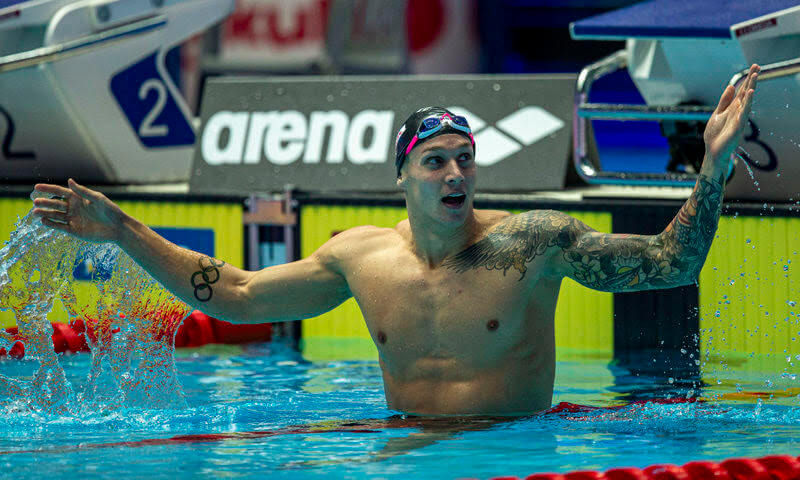
Guide To International Swimming League
Indianapolis will stage the first round of the new International Swimming League (ISL) this weekend.
As ISL put it in a press release today: “Over 100 Olympians are represented by the ISL, including 41 Olympic gold medals from the 2016 Olympic Games” (see full release at the foot of this file).
The first four rounds pitch two US-based teams against two Europe-based teams; the subsequent two rounds are knockout Derbys leading to a “Final Match” or season showdown.
This weekend, Group A teams are Cali Condors, DC Trident, both US-based, Energy Standard and the Aqua Centurions, both Europe-based.
Not all the big names listed for those teams will actually race as swimmers take into account other commitments, including training, and coaches and managers make their picks tactically and strategically with a view to making it to Las Vegas and being in line for the bigger team prizes up for grabs.
We won’t know until Saturday who is swimming what but team lists include a Who’s Who from the fast lane:
- Cali Condors: Lilly King, Mitch Larkin, Caeleb Dressel, Ariarne Titmus
- DC Trident: Katie Ledecky, Cody Miller, Zach Apple, Natalie Coughlin
- Energy: Sarah Sjostrom, Chad le Clos, Ben Proud, Penny Oleksiak
- Aqua Centurions: Federica Pellegrini, Luca Dotto, Laszlo Cseh, Sarah Koehler
- No heats, just a two-hour session each day, from 2-to 4pm Eastern Standard Time.
- each team of multi-nation swimmers will have up to 24 swimmers (12 men, 12 women) at each round, allowable squads of 32 per team.
- swimmers will race for team points and points make money prizes, a 50:50 share of all revenue pledged to swimmers and teams by the organisers, ISL
- start lists will not be known until an hour and a half before the start of racing
- start lists can change during lives action, coaches able to bring in reserves or make other switches during the two 10-minutes breaks scheduled for each of the two-hour sessions.
- 2 athletes will compete per event per club
- 2 relay teams will compete per relay event per club
- each team will be allocated specific lanes at each round of the League, the lane draw random for the first race and stuck to for each round*
- Indianapolis is the first of six rounds that will feature four teams at each event on rotation, the knockout element of the meet to leave four teams standing come the grand finale in Las Vegas on the cusp win Christmas.
- It’s short-course, which is nothing new for many but is rare or even new for a fair number of American swimmers at the heart of a short-course yards tradition.
- Lanes 1 & 2: Team A
- Lanes 3 & 4: Team B
- Lanes 5 & 6: Team C
- Lanes 7 & 8: Team D
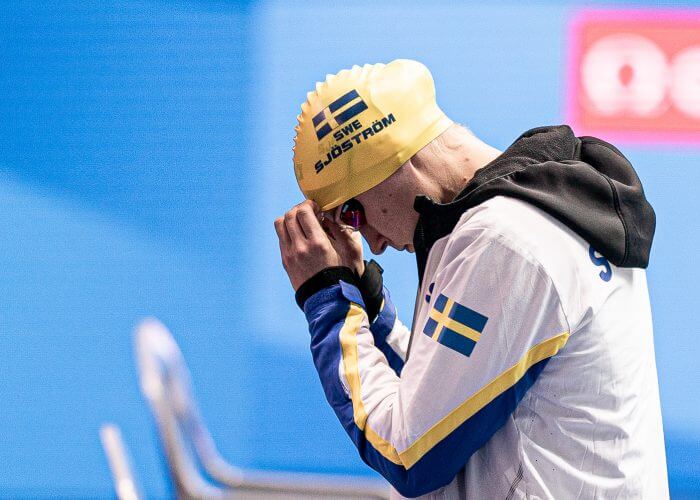
Sarah Sjostrom – Photo Courtesy: Becca Wyant
On day 2 the lanes rotate by two places, as follows from the pattern above:
- Lanes 1 & 2: Team C
- Lanes 3 & 4: Team D
- Lanes 5 & 6: Team A
- Lanes 7 & 8: Team B
- 1st 9 points
- 2nd 7 points
- 3rd 6 points
- 4th 5 points
- 5th 4 points
- 6th 3 points
- 7th 2 points
- 8th 1 point
- Round 1: 8th to 5th = 1 point up to 4 points
- Round 2: 4th & 3rd = 10, 12 points
- Showdown: 2nd = 21 points; 1st = 27 points
- 1st 4 points
- 2nd 3 points
- 3rd 2 points
- 4th 1 point
PRIZE MONEY
- 1st 6 3 18
- 2nd 4 2 12
- 3rd 2 1 6
- 4th 1 0.5 3
- 1 point = $300 through the rounds
- 1 point = $1000 in the final
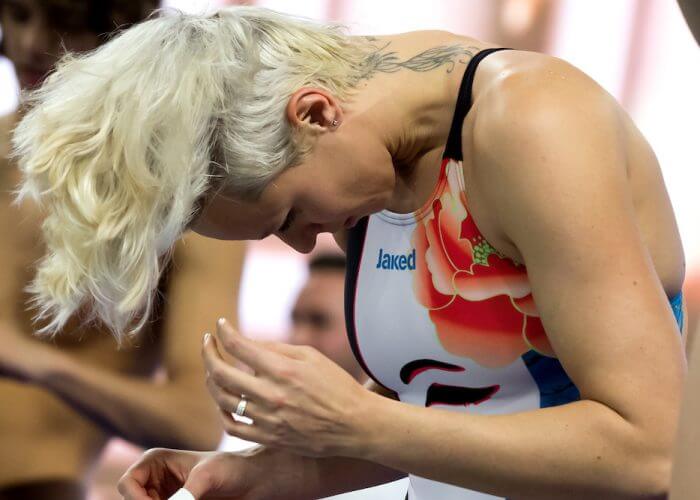
Photo Courtesy: Andrea Staccioli / Insidefoto / Deepbluemedia
MOST VALUABLE PLAYER
- The MVP will be named after each match, based on teams points contributed.
- The season MVP will be named at the end of the Final Match in Las Vegas, based on all points contributed to his/her team during the season
Where to watch:
- Live TV (Australia): Channel 7
- Live TV Europe – Eurosport:
- Live – Day 1
Live – Day 2 - Eurosport schedule: 1-hour of highlights at 10pm local time on Sunday
- Live Stream (Canada): CBC
- Live Television (Latin America): Claro Sports – link to come
- Live Television (Brazil): TV Globo – link to come
- Live Stream (USA): info and link to come
THE PROGRAM
THE SCHEDULE
- 100 butterfly
- 50 breaststroke
- 400 medley
- 4×100 freestyle relay (women)
- 10-minute break
- 200 backstroke
- 50 freestyle
- 4×100 medley relay (men)
- 10-minute break
- 200 freestyle
- 50 backstroke
- 200 breaststroke
- 4×100 freestyle relay (men)
- 100 freestyle
- 100 breaststroke
- 400 freestyle
- 4×100 medley relay (women)
- 10-minute break
- 200 medley
- 50 butterfly
- 100 backstroke
- 4×100 mixed free relay
- 10-minute break
- 200 butterfly
- 50 freestyle skins
- 4×50 Mixed Medley (if tie-break required)
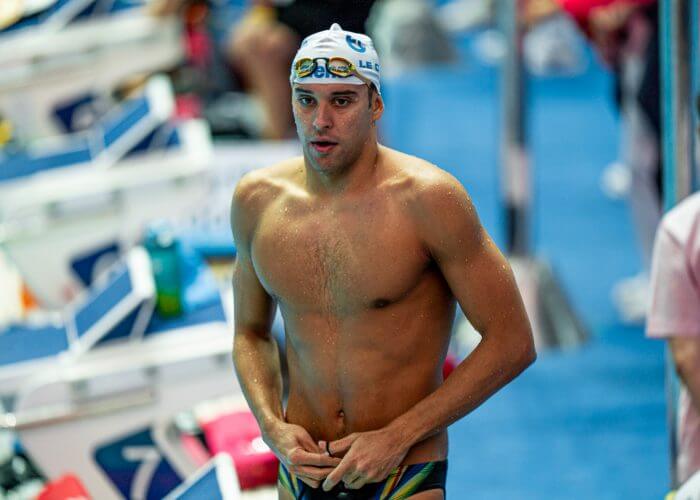
Chad Le Clos – Photo Courtesy: Becca Wyant
THE SEASON
- Group A: Indianapolis, USA | October 5-6 | 14:00 local time
- Group A: Naples, ITA | October 12-13 | 19:00 local time
- Group B: Lewisville-Dallas, USA | October 19-20 | 14:00 local time
- Group B: Budapest, HUN | October 26-27 | 18:00 local time
- USA: Washington DC, USA | November 16-17 | 14:00 local time
- Europe: London, GBR | November 23-24 | 17:00 local time
FINAL MATCH
- Showdown Match: Las Vegas, USA | December 20-21 | 13:00 local time
COMPLEX POINTS SYSTEM AND PENALTY POINT RULES
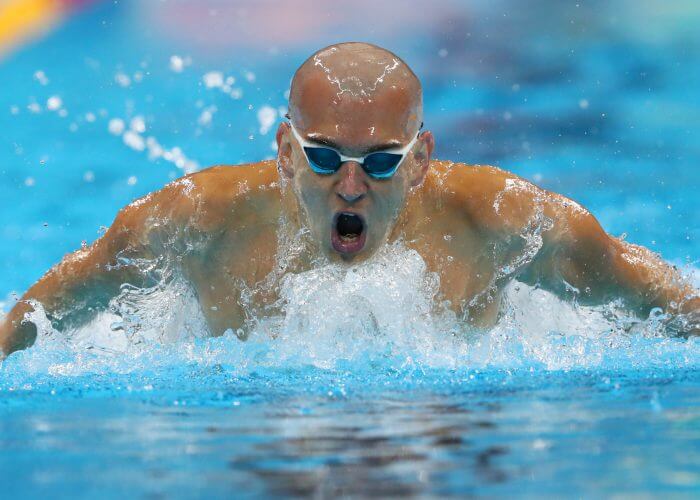
Laszlo Cseh – Photo Courtesy: Rob Schumacher-USA TODAY Sports
* The slow-limit time:
| Freestyle | |||
| 50 | 22.50 |
25.00 |
|
| 100 | 49.50 |
54.00 |
|
| 200 | 1:49.50 |
1:58.00 |
|
| 400 | 3:50.50 |
4:10:00 |
|
| Backstroke | |||
| 50 | 24.00 |
28.50 |
|
| 100 | 53.00 |
1:00.00 |
|
| 200 | 1:58:00 |
2:12.00 |
|
| Breaststroke | |||
| 50 | 28.50 |
31.50 |
|
| 100 | 1:00.00 |
1:08.50 |
|
| 200 | 2:12.00 |
2:28:50 |
|
| Butterfly | |||
| 50 | 24.00 | 26.50 | |
| 100 | 53.00 | 58.50 | |
| 200 | 1:59:50 | 2:12:00 | |
| Medley | |||
| 200 | 2:01:00 | 2:13:50 | |
| 400 | 4:19:00 | 4:46:50 | |
| Freestyle relay | |||
|
4×100 |
3:17:00 | 3:29:00 | |
| Medley relay | |||
|
4×100 |
3:35:50 | 4:02:00 |
- If a swimmer, in any given individual event, does not appear (DNS) for a race, then the swimmer will receive -4 points (minus 4).
- If a swimmer, in any given individual event, does not finish (DNF) the race or is disqualified, then the swimmer will receive -2 points (minus 2).
- If a relay team, in any given relay event, does not appear (DNS) for a race, then the team will receive -8 points (minus 8).
- If a relay team, in any given relay event, does not finish (DNF) the race or is disqualified, then the team will receive -4 points (minus 4).
- If a swimmer, in the first round of the 50-freestyle skin race event, does not appear (DNS) for the race, then the swimmer will receive -4 points (minus 4).
- If a swimmer, in the second round of the 50-freestyle skin race event, does not appear (DNS) for the race, then the swimmer will receive -8 points (minus 8).
- If a swimmer, in the third round of the 50-freestyle skin race event, does not appear (DNS) for the race, then the swimmer will receive -12 points (minus 12).
- If a swimmer, in the first round of the 50-freestyle skin race event, does not finish (DNF) the race or is disqualified, then the swimmer will receive -2 points (minus 2).
- If a swimmer, in the second round of the 50-freestyle skin race event, does not finish (DNF) the race or is disqualified, then the swimmer will receive -4 points (minus 4).
- If a swimmer, in the third round of the 50-freestyle skin race event, does not finish (DNF) the race or is disqualified, then the swimmer will receive -6 points (minus 6).
ISL Press Release, October 2, 2019
Team Managers Build Their Strategies
Over 100 Olympians are represented by the ISL, including 41 Olympic gold medals from the 2016 Olympic Games.
The historic launch of the new International Swimming League (ISL) has the entire swimming community buzzing.
The league brings several new concepts to the sport, as for the first time ever swimmers will compete for professional clubs with a base salary and lots of prize money on the table.
The opening match on October 5th and 6th will feature two American based clubs – the Cali Condors and DC Trident, and two European based clubs – the Aqua Centurions and Energy Standard.
Team strategies will likely be all over the map and very creative early on in the season as coaches and general managers learn more about how to maximize their point potential. The most intriguing decisions will be in relays and skins event, which offer point bonuses to athletes but could tax them with extra swims on an already action-packed 2-day meet schedule. Relays will score double the points of an individual event, and the skins events at the end of the meet will be triple.
This is an area where a club like Energy Standard, who are loaded with some of the world’s best sprinters including captains Chad Le Clos and Sarah Sjöström, can reap the rewards.
“Tactically focusing on the skins and relays will give any team a greater windfall of points and we are no exception,” said Energy Standard GM James Gibson.
“The critical thing with the relays is to have two strong teams. There is also a knock on effect to consider with the athletes competing just before or just after the relays so you have to be smart with team selection. There are so many different variables.”
For the Cali Condors and DC Trident, figuring out how to optimally deploy their top swimmer will be critical to their success. The Condors have Caeleb Dressel, who is coming off of a six gold, eight medal performance at the World Championships in July, and the Trident possess five-time Olympic champion Katie Ledecky.
“To keep everyone guessing we could use Caeleb in all the relays and six individual events or just a couple,” said Cali GM Jason Lezak. “Planning all the swimmers’ events is very strategic and will also change during the meet based on athlete’s performances.”
“That’s really up to our coaching staff,” Trident GM Kaitlin Sandeno said when asked how to best utilize Ledecky. “Obviously Katie is dominant in those freestyle events, but if the coaches see an opportunity for her to help the team in other ways, they feel empowered to explore those options. At the end of the day their goal is to win.”
While most of the clubs will be familiarizing with each other at their first match, Energy Standard has an instant edge having had the majority of their squad training together in Turkey over the last few years.
“Having the bulk of the team together in one location is a big bonus for us going into this inaugural ISL season,” said Gibson. “Everyone knows each other and the coaching team understands the needs of the athletes.”
A potential advantage for some of the American teams is having a lot of ex-NCAA swimmers on their roster, who have competed in a relatively similar format through college. That is the case for Lezak’s Condors, something he feels will be beneficial.
“Having NCAA experience will help in this format and we have over 80% of our team who has participated (in it) which could be an advantage for us over some other teams,” he said.
Gibson recognizes the Condors as his toughest opposition coming in and points to the NCAA as one of the reasons.
“When I look at the teams on paper, the Cali Condors jump out as the team to beat,” he said. “We have to prepare the star athletes for a different mindset in ISL. Multi-event racing, open media access, points not times and ultimately a team first mentality. The USA teams have a cultural advantage with their NCAA experience but we will learn quickly and come to Indy for some serious racing.”
And while there will certainly be rivalries developed based purely on competition, there will also be some created instantly through geography. In order to advance to the finals, a club doesn’t necessarily need to be among the top-four, they need to be in the top-two continentally.
Sandeno sees it being a friendly rivalry between American clubs.
“I’d call it a friendly rivalry,” she said. “I have known Lenny (Krayzelburg, LA Current GM) and Jason (Lezak) for a very long time. We’ve gotten to be very close over the years, and with that comes the feeling that we all want only the best for each other. But, we all happen to be athletes and therefore we’re all very competitive! And the more I get to know Tina (Andrew, NY Breakers GM), I see that she is equally as competitive as the three of us.”
“More than anything though, we collectively want to see this sport and this league grow, so I think a healthy rivalry between these four American clubs is a good thing!”
Lezak sees Sandeno’s Trident team along with in-state rivals LA Current as potential rivalries for his Condors.
“Since we will be competing against (the) DC Trident the first two competitions I definitely can see a rivalry happening,” he said. “Looking at the LA Current roster, everyone knows they will be a tough team to beat and we look forward to seeing them at the derby meet in November and hopefully again in the finals.”




